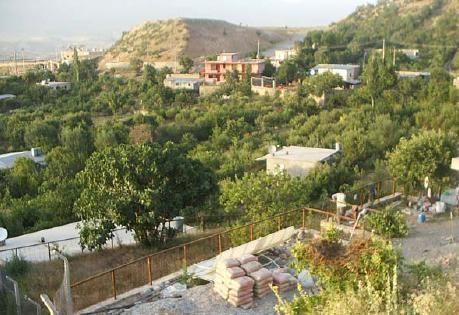Local time Tuesday 3:47 AM | ||
 | ||
Weather 2°C, Wind NW at 8 km/h, 89% Humidity | ||
Badarash (or Ashewa) is an Assyrian village in the Dohuk province of Iraqi Kurdistan. The village of Badarash is located 1.5 kilometres west of the centre of Sarsink, and has two small lakes in the western part of the town which go down into a chasm below the village. The towns name comes from the Kurdish word meaning “the Black Air”, and apparently enough Badarash has heavy, cold winds and snowy winters.
Most of the village’s houses are built from traditional materials like stone and mud, while others are built from stone and cement. Unlike many Assyrian villages, this one was never evacuated- so therefore many of its original buildings are still intact. And even after some of the houses and fields got burned and destroyed, the owners just rebuilt them. Some residents moved to Duhok and Baghdad, but the majority of them continued to stay in Badarash.
History
The village of Badarash was built in 1922 by around 25 Assyrian families from the Hakkari mountain region of Turkey, in addition to another group from the same area which built the sister village of Sarsink. They arrived between the years of 1916 and 1924 in response to the Assyrian Genocide in which the Muslim Turks and Kurds directly killed over 300,000 Assyrians in massacres, battles, and raids, and indirectly due to hunger, cold and disease.
The first church in the village was built in 1925 and is a Nestorian Church called Mar Gewargis (St. George). Another church was built in 1975 and is of the Chaldean Catholic denomination.
Before the 1961 Kurdish rebellion, 55 families lived in the village. Due to the outbreak of civil war, the village was burned along with its apple groves, which were the main source of income to the village. other forms of agriculture such as livestock and crops were a secondary source of income. As destruction and war pushed younger residents to immigrate, the population shrank to 35 families. Even with the shrinkage, The village is still large compared to other entirely Christian villages nevertheless, and is also one of the only villages in the region that was not been completely destroyed during the Al-Anfal Campaign in 1988.
